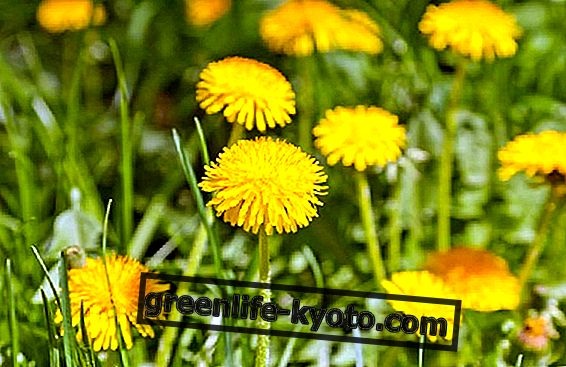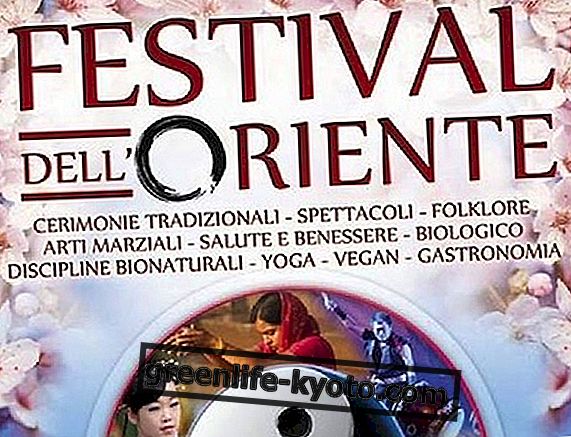Tantra is a philosophy of life and self-care that involves yoga, meditation and massage. Let's find out better.
>

What is Tantra?
The word Tantra originates from Sanskrit, translatable as "warp" or "weft" and is composed of the root Tan = "extend, multiply", and the suffix Tra = "instrument". It is a set of ancient doctrines and practices aimed at expanding the ordinary state of consciousness . Tantra yoga, tantric massage, tantric meditation : these are closely related practices. They all refer to those tools that are developed to extend human consciousness.
The evocative image of the fabric, produced with the loom through the weave of warp and weft, represents the metaphor of the union of individual and universal consciousness, and of the masculine with the feminine . Tantric philosophy has roots both in Buddhism and in archaic Hinduism, the oldest Tantra (philosophical reference texts) are of Buddhist compilation and date back to AD 350
At the center of tantric thought is the manifest universe, considered as the physical and sensorial expression of the unmanifest: hence the idea that, through immersion in the former, one can achieve full unity with the latter.
To achieve this it is necessary to follow a very strict discipline which, however, varies according to the level of consciousness of the practitioner . All levels have in common the work on the harmonization of masculine and feminine energy, Shiva and Shakty, which resemble Taoist Ying and Yang, and the aim is to appropriately awaken and channel the Kundalini energy, repository of the secret of 'lighting.
How does it work?
Asanas, mantra, pranayama, meditation and right action are the truly fundamental components of Tantra Yoga, and these are the elements that are mixed in the different schools.
Each school is different from the others because it shifts the focus to one or the other element. However, a devotional approach that emphasizes, in things as in people, the spiritual part, is fundamental because a way or a teaching can be defined as tantric. In the tantric path the so-called "right hand" and "left hand" ways are clearly distinguished.
In the schools of the right hand the precepts that lead to the union of the masculine and feminine principle are interpreted as a metaphor of the union at the energetic level, while in the streets of the left hand they are interpreted literally. From here originates the maithuna - the secret ritual of love - which is however not a central practice, although Tantra is now commonly associated with this.
On the contrary, the maithuna is considered one of the highest and last stages that the yogi must face because only true yogis can afford to practice it as a meditation technique.
What ailments cure tantra
In the physical field the benefits of Tantra yoga are those specific to any other form of yoga, and vary according to which elements the school prefers. If we are dealing with schools that favor physical appearance (Hatha, Iyengar, Power etc.) the greatest benefits will come from the vertebral column, the musculoskeletal system, the lengthening of the tendons and the looseness of the joints.
They will then dissolve and soothe contractures, tensions, joint and muscle pains . If we are dealing with schools that favor the meditative-energetic aspect (Kundalini) the benefits will involve the psychological dimension with a marked improvement in mood, reduction in stress, containment of depressive states, increase in the ability to concentrate .
Turning our gaze to the intimate dimension of the practice, without a doubt the tantric approach helps to alleviate the tensions of the couple, bringing benefits in case of problems in the intimate and couple relationship, when they have psychological roots. All thanks to the relaxed and non-competitive approach to the intimate relationship where every tension from "performance anxiety" decays.
Discover also the Tantric meditation and its benefits

Who is tantra for?
In recent times the Tantra has known a great notoriety in the West, mainly due to the emphasis erroneously placed on the use of some sexual practices; these in reality constitute only a small part of the tantric doctrine: it combines body and mind, joy and spirituality, the recognition of the sacredness of Life, a solid moral foundation, the daily practice of the Asanas for the purification of the body and of the energy channels, exercises of concentration and meditation .
The Tantric dimension of yogic practice is therefore conceived for all those who wish to deepen their physical-spirit-mind relationship through yoga, meditation and specific exercises and make energy perception even more subtle.
The law in Italy and abroad
Tantra yoga is part of the best known forms of yoga, taught and practiced in the West: Kundalini yoga, Hatha yoga, Raja yoga, Laya yoga and Mantra yoga. In all these schools of tantric yoga, precedence is given to practices and rituals of a primarily physical type.
Tantra is practiced and considered more a philosophy of life than a type of real treatment in the West; the holistic operator or master of yoga who imparts this type of teaching under the law 4 of 2013, which sets out the "Provisions concerning unorganized professions".
Recall that the holistic operator is the professional able to carry out manual treatments of energy rebalancing and functional restoration, based on Eastern and non-Eastern philosophical techniques and theories, aimed at recovering and maintaining vitality and psychophysical well-being, thus improving the life quality.
Abroad, Tantra is much more practiced than in Italy, even only in Germany and France, but especially in India and in the eastern countries, where it is also seen as an important method of treatment.
Associations and reference bodies
There are really many schools, associations and institutions that practice tantric teaching, now also in Italy. Here are some points of reference that can help your research. Abhinavagupta and his text Tantraloka (Light of the Tantra) is a complete treatise on all aspects of the tantric way.
Shri Param Eswaran, a contemporary teacher, initiated into the practice of tantric yoga by Master Swami Sivananda, during his life Shri Eswaran favored the devotional aspect of this philosophy. His teachings focus on practices of sound healing (mantra), meditation, tantric massage and the worship of the sacred feminine, what he calls "the living Goddess". Daniel Odier, also a contemporary master, founded the Tantra / Chan center in Paris in 1995. His books are reference texts for modern tantrism.
Elmar and Michaela Zadra are contemporary masters. Formed at Hindu ashrams and Buddhist monasteries on different aspects of the Tantric tradition, subsequently integrated with more modern subjects (bioenergetics, NLP, sexology), Elmar and Michaela Zadra propose an approach to Tantra addressed mainly to couples.













